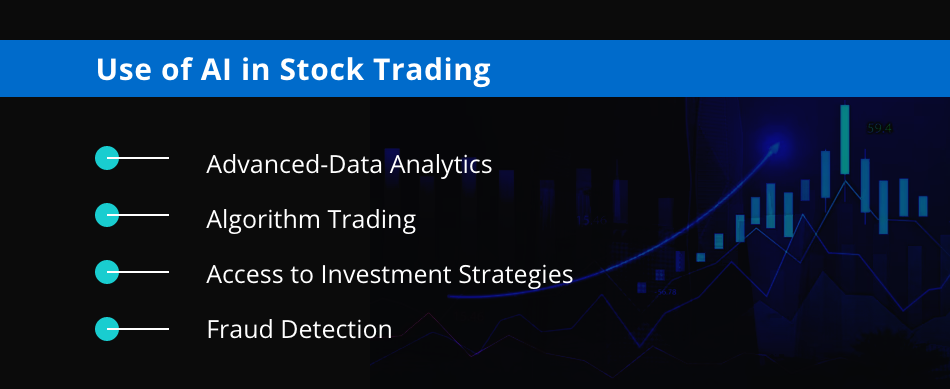20 Great Advice For Deciding On AI Stock Trading Analysis Sites
20 Great Advice For Deciding On AI Stock Trading Analysis Sites
Blog Article
Top 10 Tips When Looking At Ai And Machine Learning Models On Ai Trading Platforms For Stocks
In order to obtain accurate information, accurate and reliable You must test the AI models and machine learning (ML). Models that are poorly constructed or overhyped can result in flawed predictions and financial loss. Here are 10 top strategies for evaluating AI/ML models for these platforms.
1. Understand the Model's Purpose and Approach
A clear objective: Determine if the model was created for short-term trades as well as long-term investments. Also, it is a good tool for sentiment analysis or risk management.
Algorithm transparency - Check to see if there are any information about the algorithms (e.g. decision trees, neural nets, reinforcement learning, etc.).
Customizability - Determine whether you are able to modify the model to suit your investment strategy and risk tolerance.
2. Measure model performance metrics
Accuracy. Examine the model's ability to predict, but don't just rely on it, as this can be inaccurate.
Recall and precision: Determine the accuracy of the model to detect true positives, e.g. correctly predicted price fluctuations.
Risk-adjusted Returns: Check whether a model's predictions result in profitable trades taking risk into consideration (e.g. Sharpe or Sortino ratio).
3. Test the model with Backtesting
Performance historical Test the model using historical data to determine how it will perform in the past market conditions.
Out-of-sample testing: Ensure the model is tested with data that it wasn't trained on to avoid overfitting.
Scenario Analysis: Review the model's performance under various market conditions.
4. Make sure you check for overfitting
Overfitting Signs: Look out for models that perform extremely in training, but perform poorly with data that is not trained.
Regularization methods: Ensure that the platform does not overfit by using regularization like L1/L2 and dropout.
Cross-validation. The platform must perform cross-validation to assess the generalizability of the model.
5. Assess Feature Engineering
Important features: Make sure that the model has relevant attributes (e.g. price volumes, technical indicators and volume).
Selection of features: Make sure that the platform chooses features that are statistically significant, and avoid redundant or irrelevant information.
Dynamic feature updates: Determine whether the model is able to adapt to new features or market conditions in the course of time.
6. Evaluate Model Explainability
Interpretability (clarity): Be sure to ensure that the model explains its assumptions clearly (e.g. value of SHAP or the importance of features).
Black-box platforms: Be careful of platforms that employ too complex models (e.g. neural networks deep) without explanation tools.
User-friendly insights: Make sure the platform gives actionable insights that are presented in a way that traders will understand.
7. Review Model Adaptability
Market changes. Verify whether the model can adapt to changing conditions on the market (e.g. an upcoming regulation, an economic shift, or a black swan phenomenon).
Continuous learning: Check if the platform updates the model often with fresh data to boost the performance.
Feedback loops: Make sure the platform is incorporating feedback from users as well as real-world results to improve the model.
8. Examine for Bias or Fairness.
Data bias: Ensure the training data is representative of the market and free from biases (e.g. the overrepresentation of certain areas or time frames).
Model bias: Check whether the platform monitors the biases of the model's prediction and mitigates them.
Fairness. Make sure your model doesn't unfairly favor certain stocks, industries or trading strategies.
9. Examine the computational efficiency
Speed: Check whether the model can make predictions in real-time or at a low delay. This is crucial for traders who trade high-frequency.
Scalability - Ensure that the platform is able to handle massive datasets, multiple users and not degrade performance.
Utilization of resources: Ensure that the model is optimized to make efficient use of computational resources (e.g. GPU/TPU use).
Review Transparency and Accountability
Model documentation - Ensure that the model's documentation is complete information about the model, including its structure the training process, its limitations.
Third-party audits: Check whether the model was independently audited or validated by third-party auditors.
Error Handling: Check if the platform is equipped with mechanisms that identify and correct mistakes in the models or in failures.
Bonus Tips
User reviews and Case Studies: Review user feedback, and case studies in order to evaluate the actual performance.
Trial period: Try the software for free to see how accurate it is as well as how simple it is to use.
Customer Support: Make sure that the platform offers robust technical support or model-related support.
These guidelines will help you assess the AI and machine learning models that are used by stock prediction platforms to ensure they are trustworthy, transparent and in line with your objectives in trading. Check out the recommended https://www.inciteai.com/mp for site tips including ai investing app, investment ai, chart ai trading assistant, trading with ai, ai for investing, using ai to trade stocks, ai trading tools, ai investing app, incite, options ai and more.
Top 10 Tips To Assess The Transparency Of Ai Stock Trading Platforms
Transparency can be an important aspect when it comes to making a decision about AI trading and stock predictions platforms. It allows users the ability to trust the platform's operations as well as understand how decisions were made, and verify the accuracy of their predictions. Here are ten tips for evaluating the authenticity of platforms.
1. Clear Explanation of AI Models
Tip - Check that the platform offers a detailed description of the AI and algorithmic models that are used to predict the future.
The reason: Understanding the basic technology can help users evaluate its reliability and drawbacks.
2. Disclosure of Data Sources
TIP: Determine if the platform is transparent about the data sources it uses (e.g., historical stock information, news, social media, etc.).
Why: Knowing data sources will ensure that the platform has precise and complete data.
3. Performance Metrics Results and Backtesting
TIP: Always seek out transparent reports on performance metrics such as accuracy rates and ROI, in addition to backtesting results.
The reason: Users can test the efficacy of an application by examining the past performance of it.
4. Updates and notifications in real-time
Tips: Make sure you receive real-time notifications as well as updates regarding trades, predictions or changes to the system.
Reason: Real-time transparency allows users to be informed of every critical action.
5. Transparent Communication Concerning Limitations
Tip: See if your platform provides information about the limitations and potential risks of the trading strategies it employs and its predictions.
The reason: Recognizing limits increases trust and helps you make better decisions.
6. Users can access raw data
Tips: Ensure that users are able to access raw data used in AI models or intermediate results.
Why: Raw data can be used to confirm the predictions of others and to conduct an analysis.
7. Transparency and openness in fees and costs
Be sure that the platform provides the total cost for subscriptions, as well as any additional costs that are not disclosed.
Transparency in pricing is a great thing. It prevents unanticipated costs and boosts confidence.
8. Regular Reporting and Audits
Check whether the platform issues regular reports or is subject to audits conducted by third parties to confirm its effectiveness.
The benefits of independent verification are that it increases credibility and accountability
9. Predictions and Explainability
Tip: Check if the platform has information on how recommendations or predictions (e.g. importance of feature or decision tree) are generated.
Explainability can help users understand the reasoning of AI-driven decisions.
10. Customer Feedback and User Support Channels
Tip: Determine if there are open channels of communication for users to provide feedback and get support. Also, consider if it is transparent in the way it responds to issues that users have raised.
What is the reason? It shows an interest in the transparency of users and their satisfaction.
Bonus Tip: Regulatory Compliance
Verify that the platform adheres to financial regulations that are relevant, and make sure it declares its compliance status. This increases transparency and credibility.
Through a thorough examination of these factors it is possible to determine if an AI trading and stock prediction platform operates in a transparent manner, allowing you to make informed decisions and build confidence in the capabilities of AI. View the best he has a good point on chart ai trading for site examples including how to use ai for stock trading, free ai tool for stock market india, best ai stock prediction, ai copyright signals, ai stock price prediction, ai stock analysis, ai stock prediction, ai stock predictions, ai copyright signals, chart analysis ai and more.